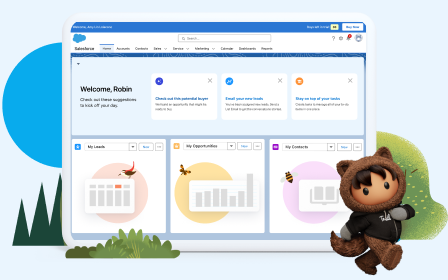Address Disruptions and Build Customer Trust
Learning Objectives
After completing this unit, you’ll be able to:
- Explain the value of Incident Management.
- Describe how Incident Management helps you resolve incidents faster.
What Is Incident Management?
In today’s digital world, service disruptions are inevitable. Web outages occur. Code changes or corrupt data bring down servers. Severe weather causes power outages or delivery delays. When service incidents like these happen to your business, you need to analyze the cause, streamline service operations, and minimize downtime. Track this process with Incident Management from Service Cloud.
Incident Management is a Service Cloud solution that helps your teams track large-scale disruptions and delegate tasks to the right experts to ensure your business delivers on customer expectations. With built-in fields, page layouts, and best practices, Incident Management helps your service teams respond to any disruption and keep customers informed. Plus, with release management features, your team can implement changes to prevent the problems from happening again.
Incident Management is available to you right out of the box. With the Service Cloud license, you’re just a few clicks away from restoring services faster and keeping customers in the know.
To see Incident Management, watch this video.
Do You Need Incident Management?
How your company responds to a disruption can make or break your brand. Fast resolution is good, but how you communicate and manage the customer experience during a service disruption is equally important. Turning a disruption into a positive experience can strengthen customer loyalty. Does your business have the tools it needs to do the following?
- Proactively identify and address incidents.
- Find the right experts and collaborate in real time.
- Centralize communications to keep internal stakeholders and customers informed.
- Provide agents and response teams a centralized place to track and manage the incident.
Service agents may not have the data they need to provide answers at the right time during a disruption. And service ops teams may not have the framework to address incidents quickly. An incident management solution changes that. Here’s how.
- A unified console where incident, customer, and case data is easy to find.
- Machine learning and no-code workflows to automate incident detection and response.
- Slack integration to bring in the right internal and external experts to diagnose the root cause.
- Broadcasts to update customers across their preferred channels and to meet service level agreements (SLAs).
Incident Management includes a number of tools to streamline service during a disruption. Let’s check them out.
How Incident Management Streamlines Service Incidents
Incident Management gives your service teams the tools and workflows they need to provide greater visibility and faster responses to disruptions. Here’s how.
| Incident Management Objects & Records |
Service Step | Tools & Capabilities |
|---|---|---|
|
Incident Create an incident record to track and identify the disruption impacting a large number of customers. |
Identify the issue. |
|
|
Create a plan. |
|
|
|
Problem Create a problem record where managers and experts collaborate on root cause analysis. |
Investigate the problem. |
|
|
Change Request After the root cause is identified, create a change or release request record to deploy the fix and resolve the issue. |
Implement the solution. |
|
|
Continuously learn. |
|
Access to Incident Management
If you’re a Service Cloud customer, you can access Incident Management. To get started, enter Incident Management in Setup, and turn the toggle to On. In orgs created in Winter ’22 or later, Incident Management is turned on by default.

Get ready to handle service disruptions like a pro.
Resources
- Trailhead: Service Cloud: Quick Look
- Salesforce Help: Incident Management
- Salesforce Release Notes: Diagnose, Track, and Prevent Service Interruptions with Incident Management
